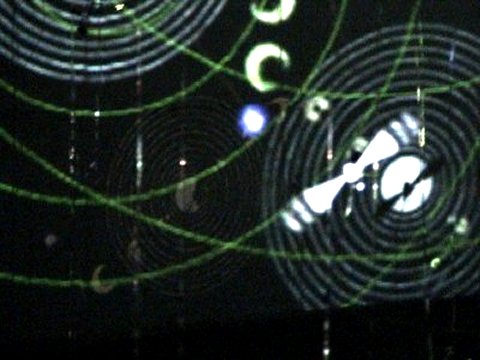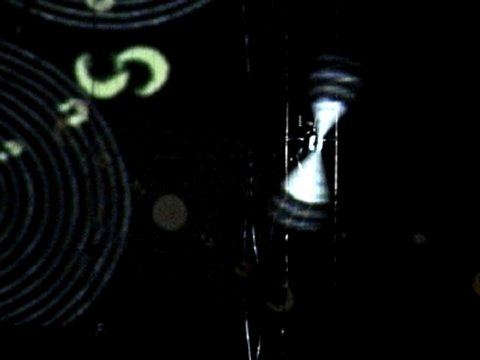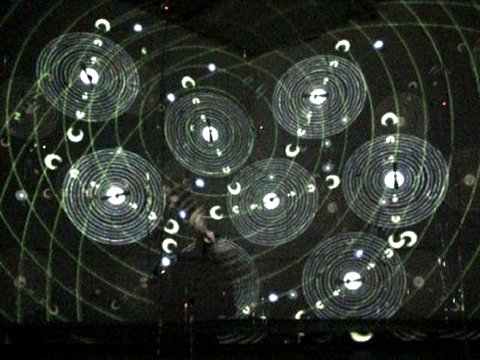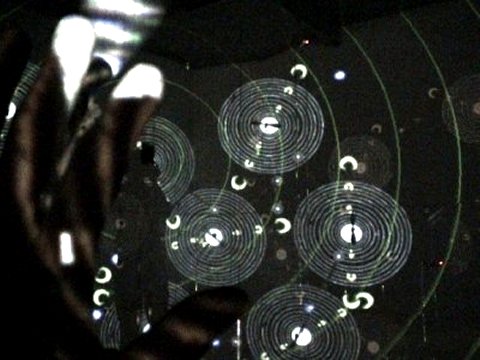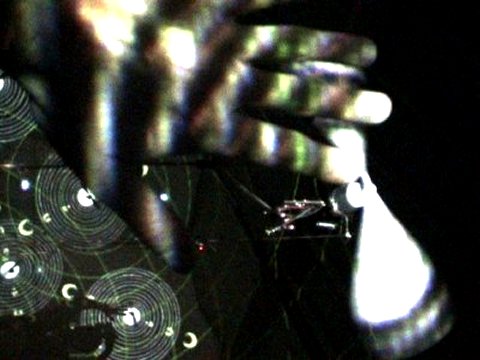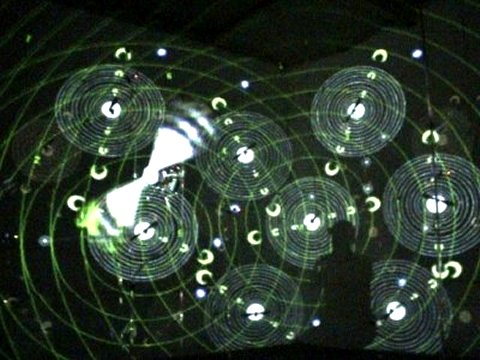|
TIME MACHINE
|
|
|
|
TIME MACHINE
|
|
|
|
|
|
|
|
Time Machine was inspired by the recipients of the 2001 Nobel Prize for Physics, who determined that matter, like light, has properties of coherence made evident through examination of interference patterns. They essentially created the first "Matter Laser," functioning much like a normal laser, but creating a coherent beam of matter rather than light. The Nobel site has more information about this discovery. |
|
|
|
|
|
|
|
|
|
|
|
The installation occupies a 50 x 50 foot area, with multiple projection sources and 16 propellers, creating a completely immersive physical space. |
|
|
|
|
|
Moving one's hand in the proximity of a propeller blocks the light -- the propeller spins faster. Multiple projection sources are used so that the viewer can block only one source at a time. This way, regardless of the viewer's position, an image will be projected both on the viewers, on the propellers, and on the back wall. |
|
|
A remarkable sense of space is created by the layers of suspended propellers and multiple projection sources. When the viewer enters Time Machine their perceptions of space, position, and time are radically altered. |
|
|



